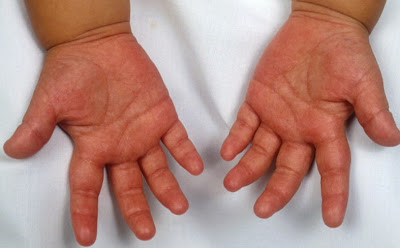They say the best way to determine ones health condition is to consult a doctor because this professional has vast knowledge about human health. Every medical doctor is also equipped with a variety of high-end hospital medical equipments that can detect any abnormalities inside the body, especially for serious conditions wherein the patient experiences no signs or the symptoms are not revealed immediately. But do you know that there are some instances wherein even without using the most basic hospital medical equipment, one can also conclude whether something is abnormal in his or her body through the abnormal changes in ones physical appearance? Yes, that’s true! By merely looking at the appearance of a person or even without using hospital medical equipment, specialized doctor can say if the patient is suffering from a serious illness. Ok let’s start analyzing some of the abnormal changes that might be easily seen in a person's body.
Silvery Hair – This unusual change of a person’s hair is often associated with Griscelli syndrome or partial albinism with immunodeficiency. However, a person with silvery hair might be suffering also from Elejalde’s syndrome or a neuroectodermal melanolysosomal disease that is very common in Mexico.
Silvery Hair – This unusual change of a person’s hair is often associated with Griscelli syndrome or partial albinism with immunodeficiency. However, a person with silvery hair might be suffering also from Elejalde’s syndrome or a neuroectodermal melanolysosomal disease that is very common in Mexico.
Redness of Sclera – Sclera is the white outer layer of the eyeball. When this portion turns into red, this is an indication of an eye infection. However, for some instances, redness of sclera is also associated to other chronic diseases like Crohn’s disease, Reiter’s syndrome, Grave’s disease, etc.
Bronze Skin – A person whose skin colors appears in intense or metallic bronze is often diagnosed with Addison’s disease. This disorder is involves a progressive destruction of the adrenal glands which then results to difficulty of secreting adrenocortical hormones. Bronze skin can also be associated with bronze baby syndrome, hemochromatosis, chronic renal failure, biliary cirrhosis, or a drug reaction.
Yellow nails – Yellow or jaundice nails is often associated to a fungal infection. However, it can also indicate a more serious condition such as liver disease, lung disease, thyroid disorder, diabetes or psoriasis.
Reddish or “Strawberry” Hands – If the unusual changes of hands color is seen on children, this is often associated to an autoimmune disorder called Kawasaki disease. Inflammation of mid-sized blood vessels are not only seen in hands but throughout the body. Other conditions linked to inflamed hands are Raynaud’s syndrome, chronic liver disease, and other pregnancy-related issues for women.
image source: google image search engine









